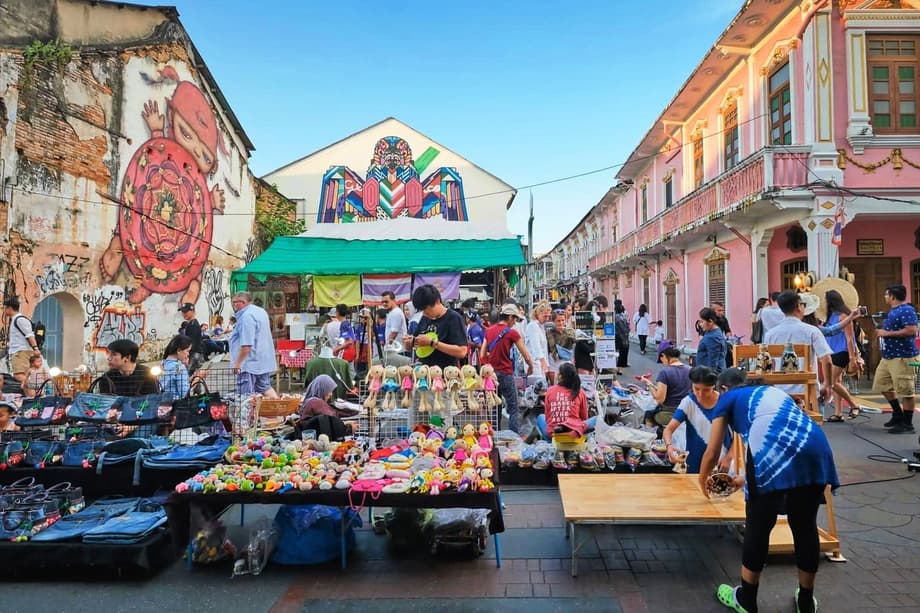Why Thai consumers feel squeezed in 2025
Thai households are walking a tightrope in 2025. Living costs keep climbing, incomes have not kept pace, and confidence in the broader economy is improving only slowly. That mix is reshaping spending priorities across the country. New findings from regional consumer studies show a small improvement in optimism among Thai consumers, yet a clear pullback from non essential purchases. Families are redirecting money toward health, education, and personal development, and they are saving more to guard against uncertainty. This is not a short blip. It looks like a strategic reset of household budgets.
- Why Thai consumers feel squeezed in 2025
- Confidence edges up, caution stays
- What households are prioritizing now
- Prices, jobs, and politics shape sentiment
- Social media changes the path to purchase
- Generations and the solo consumer reshape demand
- Savings rise, debt risks linger
- Where money still flows despite caution
- What businesses and policymakers can do now
- Key Points
The economic backdrop helps explain the caution. Growth in Thailand remained modest in 2024, and confidence fell below the regional average. Inflation hit a high point last May, and planned energy price changes continue to keep utility bills in focus. Job security has become a nagging worry. Surveys show more Thais now say the national economy is in poor shape, and many expect bills for essentials to rise in the months ahead. That combination has cooled enthusiasm for big purchases and spurred a search for better value.
Despite the anxiety, consumers are not frozen. Many are optimistic about the future yet choose to act prudently. The share of consumers who say they feel confident managing their finances is high. A large majority report saving at least a tenth of their monthly income. Younger people are opening more savings accounts and starting to invest. At the same time, social pressures make consistent saving harder for many, especially Gen Z and Gen Y. This push and pull between aspiration and caution is shaping how Thais spend, save, and plan for the years ahead.
Confidence edges up, caution stays
The latest reading of sentiment shows 39 percent of Thai consumers feel positive about the economic outlook, an increase from last year. That lift is real, yet the mood still leans conservative. The clearest sign is where money is going. Forty four percent of consumers report spending more on education, healthcare, and wellbeing. Spending on luxury items and leisure travel is cooling. Households also have retirement on their minds. More than half expect to retire after age 60, and typical savings goals reach around 3.9 million baht, rising to 10.5 million baht among affluent consumers.
Price pressure and policy uncertainty are feeding cautious choices. Consumers are trimming non essentials, hunting for discounts, and in many cases looking for secondary income. Inflation remains a top concern and planned adjustments to energy prices weigh on household budgets. The instinct to protect financial stability has grown. Many are still going out and enjoying life, but the bar for discretionary spending is now higher and the path from interest to purchase is longer.
Younger and wealthier groups remain the exceptions that prove the rule. Before the latest shift, Gen Z and Gen Y drove a rise in spending on experiences such as dining, concerts, and short getaways. International trips within Southeast Asia remained popular, with Singapore, Vietnam, and Malaysia among the top destinations. The impulse has not vanished, yet it has softened. Decision making now takes more time and often waits for promotions or bundles that feel like good value.
What households are prioritizing now
Thai consumers are moving money toward essentials and self investment. Health, education, and quality of life receive larger shares of the monthly budget. Food choices reflect the trend. Surveys show strong concern about safety and nutrition, with many consumers paying close attention to pesticides, additives, and ultra processed products. Use of supplements and vitamins is common, and a shift toward healthier options is clear. Traditional shopping habits remain strong, but digital channels and meal delivery continue to complement the weekly shop.
Financial discipline is growing alongside this reset. About 87 percent of consumers say they are confident in managing their money, and around three in four report saving more than 10 percent of their income. Among affluent consumers, the share saving at that level is even higher. Banks report a surge in new accounts from Gen Z, and more young people are starting to invest. Digital tools are part of the story. Banking apps now provide spending insights, predictive alerts, and goal tracking to help nudge better habits. The barrier is social pressure. Many Gen Z and Gen Y consumers say image driven spending makes it difficult to save consistently, an admission that mirrors the rise of status consumption during the last few years.
Prices, jobs, and politics shape sentiment
Thai worries in 2025 go beyond prices alone. Research finds the biggest concerns include financial and political corruption at 45 percent, poverty and social inequality at 37 percent, unemployment at 31 percent, inflation at 24 percent, and crime and violence at 22 percent. The public mood is cautious. More people describe the national economy as bad compared with last year. That affects behavior at the checkout. Over half of consumers are less comfortable buying major items, and nearly half hesitate more over routine household purchases. Households expect utilities, fuel, and food costs to rise in the next six months. Job insecurity compounds the strain, with many knowing someone who recently lost work and more fearing they could lose theirs.
Inflation can feel different from official figures when it shows up in energy bills and grocery receipts. Thailand saw consumer prices climb during 2024, and shifts in regulated energy prices amplified the hit to budgets. Even if headline inflation cools, the experience for families can still feel tough if wages lag or if key bills move higher. That is why price planning, promotions, and clear value are getting more attention. Brands that help customers forecast and manage expenses are becoming partners rather than just sellers.
Social media changes the path to purchase
Digital platforms now play a central role in how Thais shop and learn. Forty five percent of consumers say they buy more through social media than before. At the same time, 47 percent say they take longer to decide. Many watch live streams for entertainment and discovery, then pause before committing. The result is a slower sales cycle yet deeper engagement. Companies are shifting from quick conversion to community building and loyalty. The shift reflects where people get their information. Social media is the top news source for Thai consumers, well ahead of television and news websites. That makes trust and content quality critical. Effective strategies blend entertaining discovery with transparent product information, reliable return policies, and clear delivery timelines.
Generations and the solo consumer reshape demand
Generational dynamics matter more than ever. Research by Media Intelligence Group highlights Gen Z as the early force and trend setter, shaping new consumption patterns with spending power measured in the trillions of baht. Gen Horizon, often described as Gen X, are the main spenders with even larger purchasing clout. Gen Z purchases often express identity and values, with a strong emphasis on mental health and personal image. Gen Horizon consumers hold higher incomes and assets but face competing responsibilities, supporting both parents and children. Many feel underprepared for retirement and remain cautious about financial products. The contrast means brands must tailor both messaging and benefits to suit very different motivations.
Singles also play an outsized role. Research from The 1 Insight finds Thailand’s solo economy accounts for more than two thirds of consumer spending. Singles often prioritize premium lifestyle categories such as beauty services, fashion, and home decoration and are willing to pay for quality of life improvements. Urban singles outspend rural peers, and women account for a large share of this segment. The rise of single living helps explain why some premium categories continue to perform even as many households cut back on luxuries. It underscores how segmentation is the key to understanding where spending is holding up and where it is falling.
Savings rise, debt risks linger
Household finances show two faces. On one side, saving rates are improving and many consumers report good control over their budgets. On the other, Thailand still carries a heavy household debt load, and the quality of that debt has worsened in parts of the market. Government data show total household debt near nine tenths of GDP at the end of 2024, a very high level by regional standards. Growth in new borrowing slowed, yet overdue personal loans of more than 90 days rose to about 9 percent of total personal loans. Officials have warned about risky borrowing tied to social status and image. Many households say they have emergency savings for less than six months, which leaves them vulnerable if conditions worsen.
Policy responses are focusing on better information and oversight. Authorities are urging cooperatives to join the national credit bureau so that lenders have a full picture of household obligations. Early adopters show that transparent reporting can help change borrowing behavior. At the same time, research points to gaps in financial literacy. Few consumers meet basic guidelines for budgeting, debt management, and investing, even though many are saving more. Education and simple tools can help close that gap. The goal is to safeguard resilience while avoiding a pullback that would deepen the slowdown in consumption.
Where money still flows despite caution
Not all categories are cooling. Durable goods show longer term promise. The household appliances market is projected to grow strongly through 2030 as urbanization and new housing add demand. Consumers are embracing smart and energy efficient products that help cut bills in the long run. Online channels for appliances continue to gain share thanks to price transparency and convenience. The posture is careful, but households still replace essential items and upgrade when the value proposition is clear.
Mobility patterns are also in flux. Global surveys show many consumers prefer hybrids or conventional engines for their next vehicle, citing affordability, charging availability, and concerns over battery life. Thai buyers tend to share these practical concerns. That slows immediate adoption of full battery electric models, yet it opens room for service packages, extended warranties, and fuel saving features that defer replacement while improving the ownership experience.
Experiences continue to attract interest, especially among younger consumers, even if purchase decisions take longer. Domestic trips, local food experiences, and value driven events are still drawing spend. The sweet spot is curated bundles that keep costs predictable and rewards programs that stretch budgets. In travel, short regional breaks remain appealing when promotions are timed to local holidays and school calendars.
Food and health remain central. Consumers are scrutinizing ingredients and sourcing. Many aim to avoid ultra processed items and look for safety certifications. Supplement use is widespread. Brands that demonstrate quality, traceability, and fair pricing win trust. Payment habits are shifting too. Real time transfers and scan to pay are part of everyday life, and consumers welcome personalized offers through banking apps when they are relevant and timely.
Financial services have a bigger role to play. Digital banking and payments are nearly universal, and consumers are open to guidance when it helps them sustain a lifestyle without risking their safety net. Banks that use data responsibly to coach saving and investing can build loyalty, especially among young customers who want to learn but prefer simple steps and clear progress tracking.
What businesses and policymakers can do now
For companies, the priority is to sell value and help customers feel in control. Position products around durability, health benefits, and total cost of ownership. Bundle preventive health services or education content with purchases. Extend repair coverage and offer convenient service. Replace flash sales with measured loyalty rewards that encourage steady engagement. Social commerce should remain entertaining but backed by transparent return rules, clear delivery timelines, and responsive customer service. Support longer decision journeys with price alerts, reserve and collect options, and try at home pilots where suitable.
For financial institutions, double down on tools that make saving the default. Automated round ups, goal based pockets, and reminders when spending drifts off plan can change behavior without judgment. Promote simple insurance that protects income and health at price points households can handle. Use data to provide relevant advice rather than a flood of offers. Build starter investment plans for first timers and explain risks in plain language. These steps can turn higher saving intent into lasting habits.
For policymakers, focus on stability and capacity building. Manage energy cost volatility to protect household budgets. Expand debt relief paths for distressed borrowers while preserving credit discipline. Integrate all cooperatives into the credit bureau to close blind spots in lending decisions. Scale financial literacy programs in schools and workplaces. Encourage retirement saving through tax incentives and employer matching. Invest in job training aligned with growing sectors so that household incomes can rise with living costs. These actions can lift confidence and reduce the drag from high debt.
Key Points
- Optimism ticked up to 39 percent, but Thai consumers are still cautious and shifting spend to health, education, and wellbeing.
- Forty four percent increased self investment spending, while luxury and travel outlays cooled this year.
- Retirement planning is rising, with typical goals near 3.9 million baht and 10.5 million baht for affluent households.
- About three in four save at least a tenth of income, and 87 percent feel financially capable, yet social pressure makes saving inconsistent for many.
- Top worries include corruption, inequality, unemployment, inflation, and crime, and many expect higher utility, fuel, and food costs soon.
- Social media drives buying for 45 percent, while 47 percent now take longer to decide, rewarding brands that build communities and trust.
- Household debt remains high at about 88 percent of GDP, with overdue personal loans rising and calls for better credit oversight.
- Spending pockets persist in experiences, smart appliances, and health focused products, even as major purchases slow.
- Clear value, financial coaching, and policy support on energy, debt, and skills can strengthen household resilience and keep growth steady.












